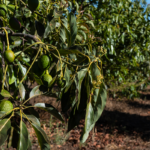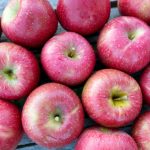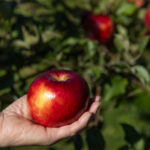Boosting productivity, keeping labor in a tight-margin industry

With young plantings coming online around the world prompting a surge in volumes, the blueberry industry is starting to look a bit like other sectors that have experienced booms - demand continues to grow but not as quickly as supply. 
In this context the solution for some is to consolidate or even look to automation, but for Michigan-based Bowerman Blueberries efficiencies have been found at home through the help of a proactive labor policy and the application of new technology.
“I would definitely consider us to be a smaller farm comparatively. We don’t have a huge number of acres like some growers do, so we’ve really had to carve out a niche,” says operations manager Andrew Vantil.
“Whereas some people are just pumping out tons and tons, we’re trying to focus on making sure the product that we do send out is of the utmost quality; that has allowed us to reach different markets,” he says, adding variety management is also key.
Tackling labor shortages
As is the case in many parts of the U.S., Vantil says the labor shortage has hit western and southwestern Michigan “very hard”, and a lot of his friends who are blueberry growers have suffered greatly as a result.
“I’d like to say thankfully that up until this point we haven’t had a major decrease on our own farm but I really think that has a lot to do with loyalty with people coming back year after year,” he says.
“I think it also has to do with how the employees feel at your farm – we offer housing to a lot of our workers whereas some growers can do that.
He says one of the ways Bowerman Blueberries has sought to combat the shortage has been actions to make workers feel “not only wanted but appreciated”.
“So we give them small gifts when they come to the farm for the first time, gifts when they leave,” he says.
“I usually take my packing crew out for dinner every now and then to show them appreciation.
“But a lot of farmers are combating in a different way – some are moving more towards a machine pick, they’re feeling that’s a necessity nowadays rather than an option, and some people are just trying to offer more.”
He says while there is a lot of buzz around the H-2A temporary agricultural worker visa program, it’s not yet a “necessity” for Bowerman Blueberries.
“There are definitely a lot of challenges and a lot of speed bumps with the H-2A program.
“It’s something we’ve considered and it’s even something we’ve looked into, but at this point, I don’t feel like the H-2A is a necessity, nor is it that beneficial to us at this point.”
Harnessing new technology
Vantil says the company has been able to boost its productivity through workforce and management tools from California-based company PickTrace, which allows not just for monitoring and real-time data entry, but also making projections.
“With the ever changing environment of the produce industry and how demanding the marketing and sales and logistics are when you’re dealing with a perishable product, we’ve really had to increase our ability to make projections,” he says.
“It helps us see where were we at yesterday versus where we are today and where we’re going to be next week, and translate that data into speaking with my logistics companies, marketing companies, having an answer of what you’re thinking for next week.
“That really helps the industry in terms of setting prices, learning demand.”
He says one of the best features of PickTrace, like other start-ups trying to do something similar, is its real-time component.
“Our industry is very volatile compared to other industries when it comes to labor, consistency, and the weather.
“So for me personally the ability to look and say that I have this many pickers in the field right now and as of nine O’clock this morning I’ve already picked this many pounds, it gives me an idea of what my day is going to be like and also what tomorrow is going to be like.
“Anybody can take raw data and help make projections with that data, but PickTrace does a really nice job in formatting that data into comparisons from year to year, field to field, and different things like that.”
He adds field managers can use the app to assign specific values to fruit such as it being “very wet” if there’s been dew overnight and the field hasn’t dried yet, or if the fruit is soft.
“That all happens in real time but it’s a tool that our field manager didn’t have before. So it’s made a big difference with our production quality.
“It’s definitely a subjective thing but it’s something that we try to train on.”
From a labor perspective, it’s also saved time and led to more precision in calculating hours worked for pickers and packhouse workers.
“One of the reasons that I went with PickTrace was they were able to take their model and tailor it around how we’re already used to doing things.
“We have been able to tailor their product so they [pickers] don’t notice the difference. The only people who have really noticed the difference are the field managers, and the packinghouse employees who are punching in a little bit differently.
“Now I try to use it to track what's being done, so one person might check in to tractor work, another might check in to cleaning, whereas before they were just punching in and out,” he says, adding there has been a learning curve as the team gets to understand the technology and knowhow.
Photo: Bowerman Blueberries' Facebook Page














































